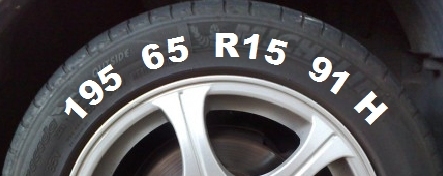Descifering tyre hyeroglyphics

Part of our series of articles linked to explaining how cars actually work – in which we’ve talked about the types of hybrids and the various types of braking systems – today we’ll be explaining how to descifer the numbers and letters on your tyres.
Tyres have quite a large role to play in terms of road safety with many crashes and near misses being attributed to tyres that are badly worn, not suitable for the type of driving you’re doing or made of cheap, inferior materials.
Even though the large majority of of drivers will rely on the services of experts to point them towards tyres good for them, it really wouldn’t be a bad idea to be able to ‘read’ what is says on them anyway since it can get you out of some potential issues in various circumstances.
Let’s start with the basics, the numbers embossed on the sidewalls, and for the purpose of our article we’ll take an example tyre number of: 215/45R16 90V, and explain in turn which number means what.
215 – this is the width of the tyre in milimetres;
45 – the aspect ratio or height of the sidewall from the wheel rim. This is actually the percentage of the width, in this case 45%;
R – this stands for radial ply construction. Other options can be the older style bias ply construction which isn’t used anymore but you can still find those types of tyres on older, classic vehicles;
16 – this is the wheel rim diameter in inches;
90 – this is the load index or load rating. This is a series of numbers that correspond to the maximum load each tyre can take in kilograms, 90 means 600 kg;
V – this is the speed symbol and will lets you know the safe upper speed limit of the tyre with maximum load, V=240km/h.
The load rating and speed limit go hand in hand and with our example tyre they add up to tyres that can handle 240km/h with 600kg of load per tyre.
















